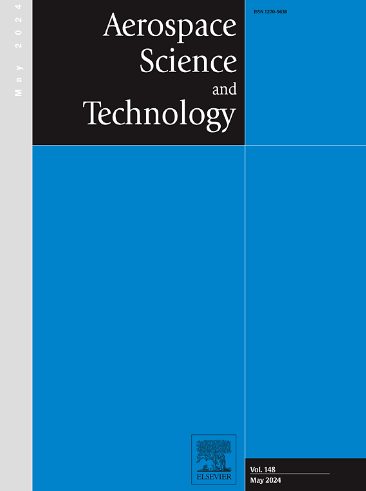泄漏流对高速扩散器级联性能影响机理的实验和数值研究
IF 5
1区 工程技术
Q1 ENGINEERING, AEROSPACE
引用次数: 0
摘要
为了进一步提高级联的性能,本研究以高负载扩散器级联为研究对象。通过简化试验中带有泄漏流的级联设计,在设计入射角为 0° 和最小损耗入射角为 -4° 时,针对不同的泄漏流量和泄漏流入角进行了试验和数值模拟。结果表明,泄漏流量和流入角的变化会导致级联前缘边界层动量厚度的变化,从而影响级联性能。增加泄漏流速会导致泄漏流的跨向动量和切向动量增加,级联前缘边界层的轴向动量厚度增厚,级联通道内端壁上的静压降低,膨胀能力下降,损耗增加。增大泄漏流入角会导致泄漏流的跨向动量不变、切向动量增大、级联前缘边界层的切向动量厚度增厚、前缘静压逐渐增大,但级联通道内的静压减小,从而导致膨胀能力减小。泄漏流切向动量的变化主要影响级联通道内的通道漩涡、尾部脱落漩涡和集中脱落漩涡。本文章由计算机程序翻译,如有差异,请以英文原文为准。
Experimental and numerical study on the mechanism of leakage flow influence on the performance of high-speed diffuser cascade
For the purpose of further enhancing the performance of the cascade, this study takes the high-load diffuser cascade as the research object. By simplifying the design of the cascade with leakage flow in experiments, tests and numerical simulation were conducted at design incidence angle of 0° and the minimum loss incidence angle of -4° for different leakage flow rates and leakage inflow angles. The results show that changes in leakage flow rates and inflow angles will lead to variations in the momentum thickness of the boundary layer at the leading edge of the cascade, thereby affecting the cascade performance. Increasing the leakage flow rate results in an increase in the spanwise and tangential momentum of the leakage flow, a thickening in the axial momentum thickness of the boundary layer at the cascade leading edge, a reduction in the static pressure on the endwall within the cascade passage, a decrease in the expansion capability, and a raising in losses. Increasing the leakage inflow angle results in no change in the spanwise momentum of the leakage flow, an increase in the tangential momentum, a thickening in the tangential momentum thickness of the boundary layer at the cascade leading edge, a gradual increase in the static pressure at the leading edge, but a decrease in the static pressure within the cascade passage, leading to a decrease in the expansion capability. Changes in the tangential momentum of the leakage flow mainly affect the passage vortex, the trailing shedding vortex and the concentrated shedding vortex within the cascade passage.
求助全文
通过发布文献求助,成功后即可免费获取论文全文。
去求助
来源期刊

Aerospace Science and Technology
工程技术-工程:宇航
CiteScore
10.30
自引率
28.60%
发文量
654
审稿时长
54 days
期刊介绍:
Aerospace Science and Technology publishes articles of outstanding scientific quality. Each article is reviewed by two referees. The journal welcomes papers from a wide range of countries. This journal publishes original papers, review articles and short communications related to all fields of aerospace research, fundamental and applied, potential applications of which are clearly related to:
• The design and the manufacture of aircraft, helicopters, missiles, launchers and satellites
• The control of their environment
• The study of various systems they are involved in, as supports or as targets.
Authors are invited to submit papers on new advances in the following topics to aerospace applications:
• Fluid dynamics
• Energetics and propulsion
• Materials and structures
• Flight mechanics
• Navigation, guidance and control
• Acoustics
• Optics
• Electromagnetism and radar
• Signal and image processing
• Information processing
• Data fusion
• Decision aid
• Human behaviour
• Robotics and intelligent systems
• Complex system engineering.
Etc.
 求助内容:
求助内容: 应助结果提醒方式:
应助结果提醒方式:


